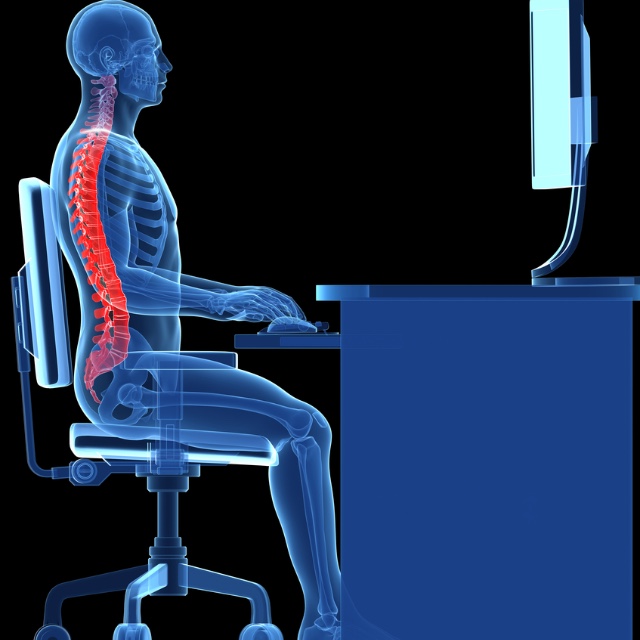The Correct Way To Sit At Your Desk
Sometimes there’s no way to avoid long spells at a desk. But there’s no reason why you can’t make your working environment a healthy one.
Sitting at a desk isn’t often regarded as a healthy option, however, with a few small changes to the way you sit and your daily routine, you can minimize the negative effects on your health.
First, you need to assess how you sit at your desk. And there are improvements you can make to your sitting position that will eradicate many of the problems associated with sitting at a desk for prolonged periods.
If you spend a considerable amount of time in front of a computer, either in the workplace or at home, aching shoulders, neck and wrists, and eye strain will all be familiar ailments.
Our bodies are not designed for engaging in such repetitive activities as tapping at a keyboard all day or clicking on a mouse, and our eyes certainly aren’t meant to be staring at a glaring monitor for hours on end.
What makes it all the worse is that many of us then go home and do the same again, often in a more poorly laid-out work space. So what can you do to ensure your suffering is minimal? Admittedly, if you sit at a desk for long periods of time, you are going to feel some degree of discomfort afterward.
However, the following tips on how to make your workstation healthier should reduce the effects your daily routines are having on your body.
The perfect workstation position
Your desk sitting position
To set up your workstation to allow you to work in an ideal manner, the following basics should be adhered to:
Legs: thighs should be parallel to the floor, while the lower legs should be vertical and at 90 degrees to the floor.
Seat height: adjustable chairs should be altered so the height is level with the back of the knee when the feet are on the floor or the footrest.

Arms: upper arms should hang at a vertical 90 degrees to the desk, with forearms parallel to the floor and elbows close to the body.
Wrists: your wrists should be straight and not anchored on anything.
Back: your back should be upright or slightly reclined and not twisted in any way.
Feet: the feet should be at 90 degrees to the lower portion of the legs.
Sight: the line of sight should be between looking straight ahead and 35 degrees below the horizontal.
Your desk space equipment
Once you are sitting comfortably and in the correct seating position, it is time to consider all the equipment around you and where this should be placed for maximum comfort.
Keyboard: should be located at a height to enable you to keep your upright posture, with your arms relaxed at your side and a 90 degree angle at the elbows and straight wrists.
Mouse: should be at the same level as your elbow so it can be accessed with a straight wrist. If being used for long periods, the elbow or forearm should be supported and fingers should be rested on the mouse buttons rather than hovering above.
Monitor: generally speaking this should be placed directly in front of you. The height should enable you to see the entire screen without any excessive neck movement. The screen should be tilted to minimize glare.
Work documents: if you are spending long periods typing from documentation, this should be held in front of you (preferably with a document holder) to prevent neck and eye strain.
Telephone: the phone should be within easy reach, and if you are required to type and speak at the same time, a headset is probably the best option.
Miscellaneous items: other required items should be in easy reach to prevent unnecessary straining.
Remember to move at your desk
It’s important to remember that you are not a machine. Sitting in a rigid state to follow all the rules listed is not the perfect way to go about it. Your body is designed to move, so make sure you do.
You could try stretching at your desk, leaning back on your seat and stretching your legs and arms out. And to release pressure from your shoulders and neck caused by sitting with your shoulders hunched up all day, try a few shoulder raises.
Also take regular breaks to prevent eye strain and a build-up of tension. One way to do this is to set up to a printer away from your workplace, requiring you to get up and walk to it, thus ensuring you stretch your legs.
Apply these sitting tips at home too
Of course, all the tips mentioned can be applied to your computer desk at home too. You may not think you spend that much time on it at home, but it is likely that even with an hour or two at home using your PC, your time spent sitting in front of a monitor each day is probably around 10 hours each day!



